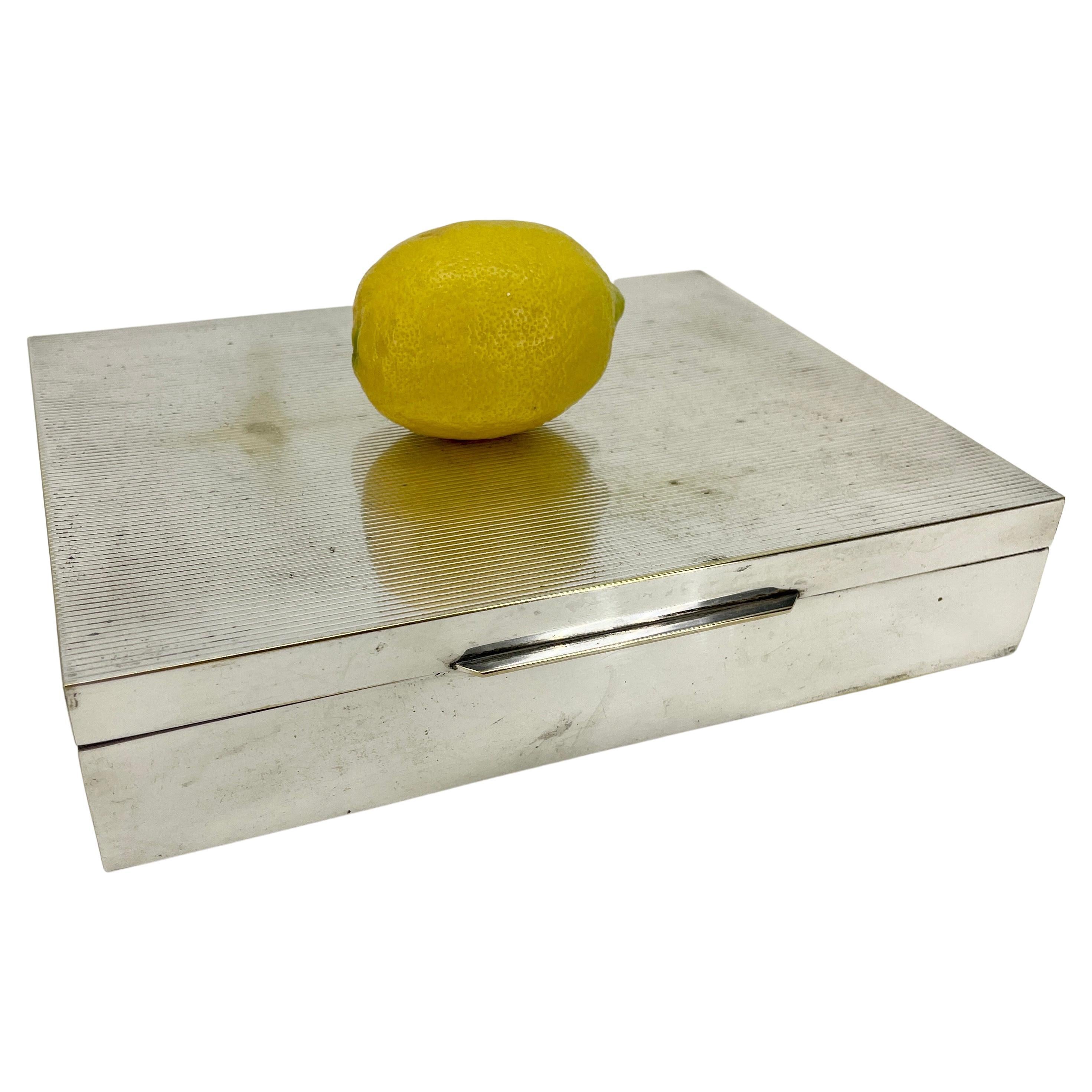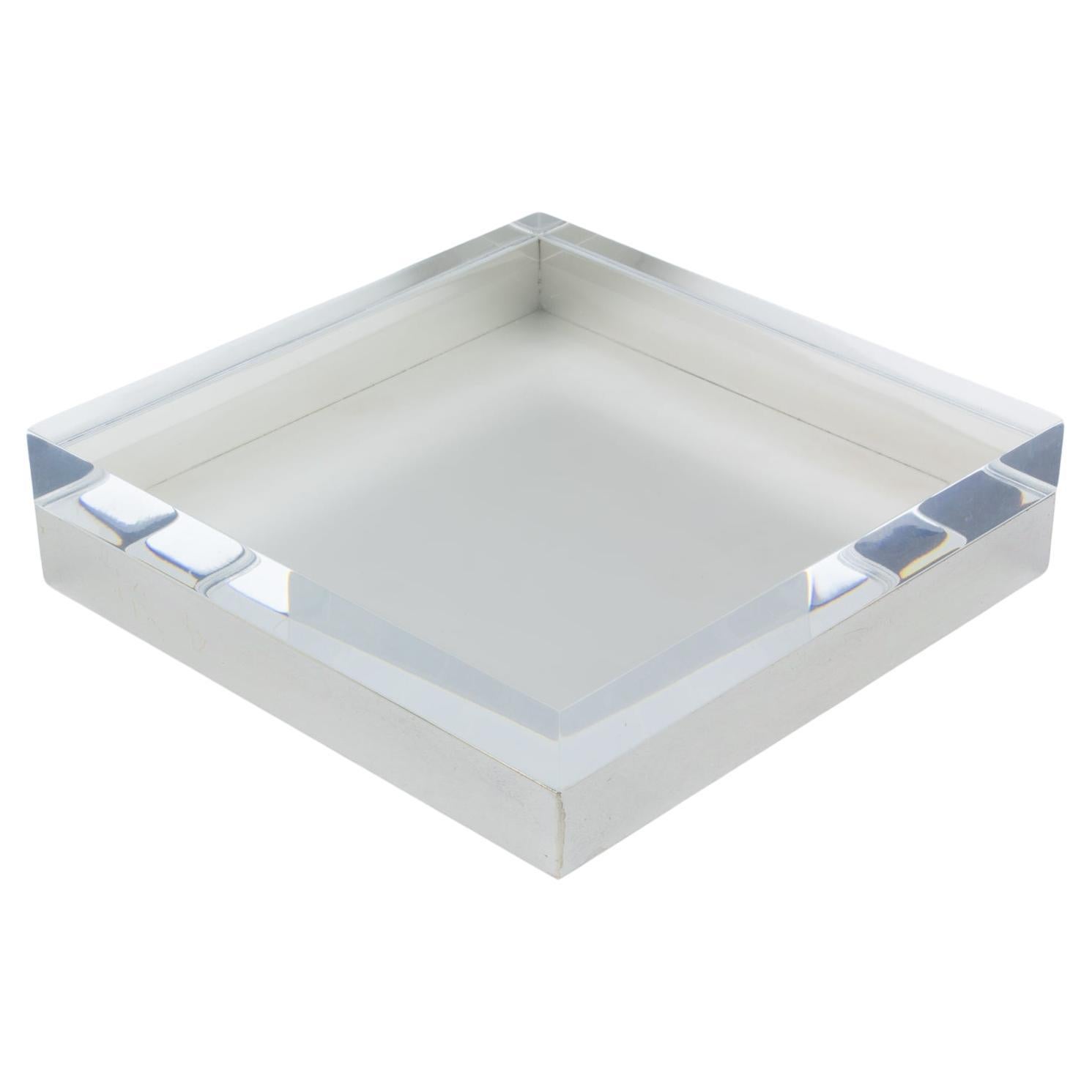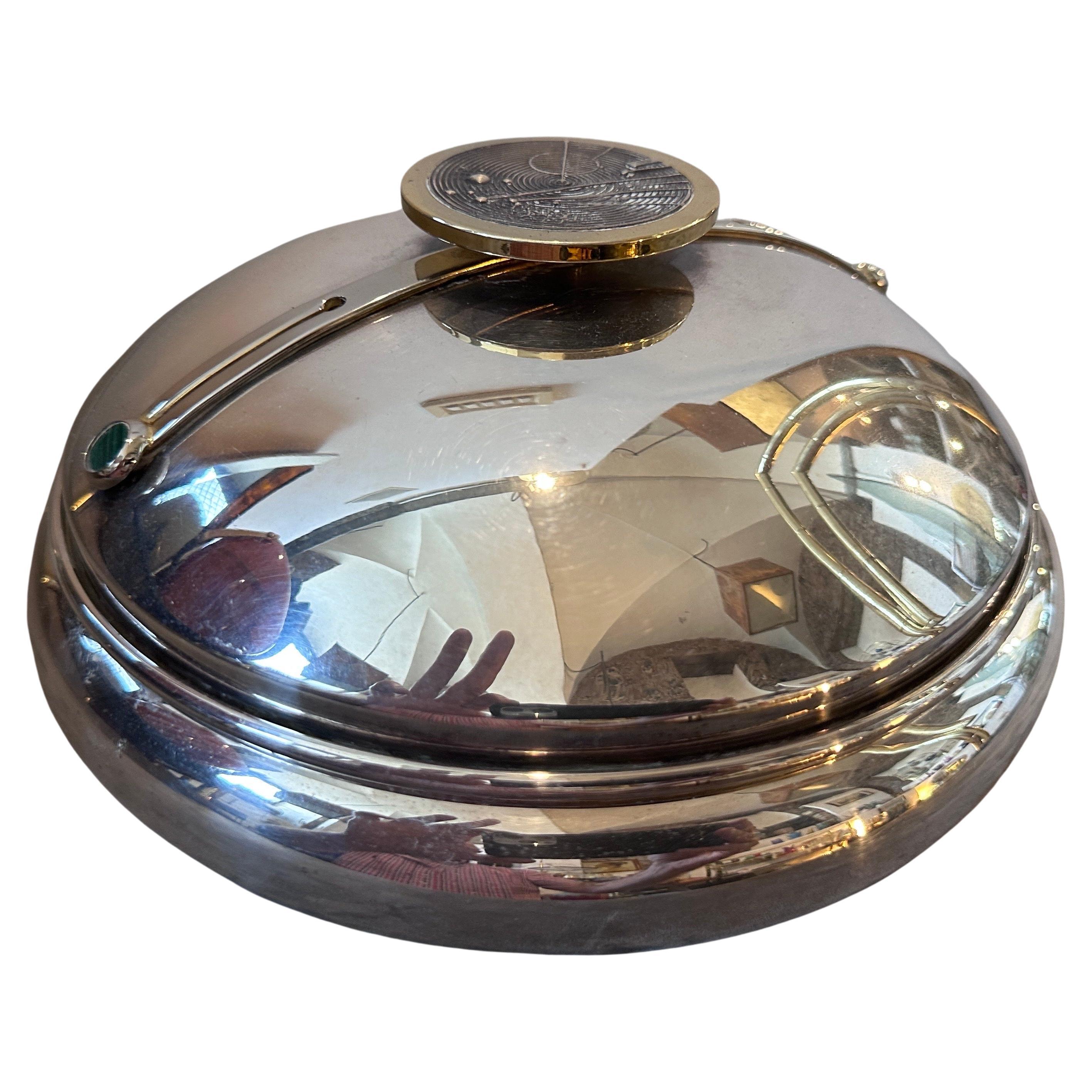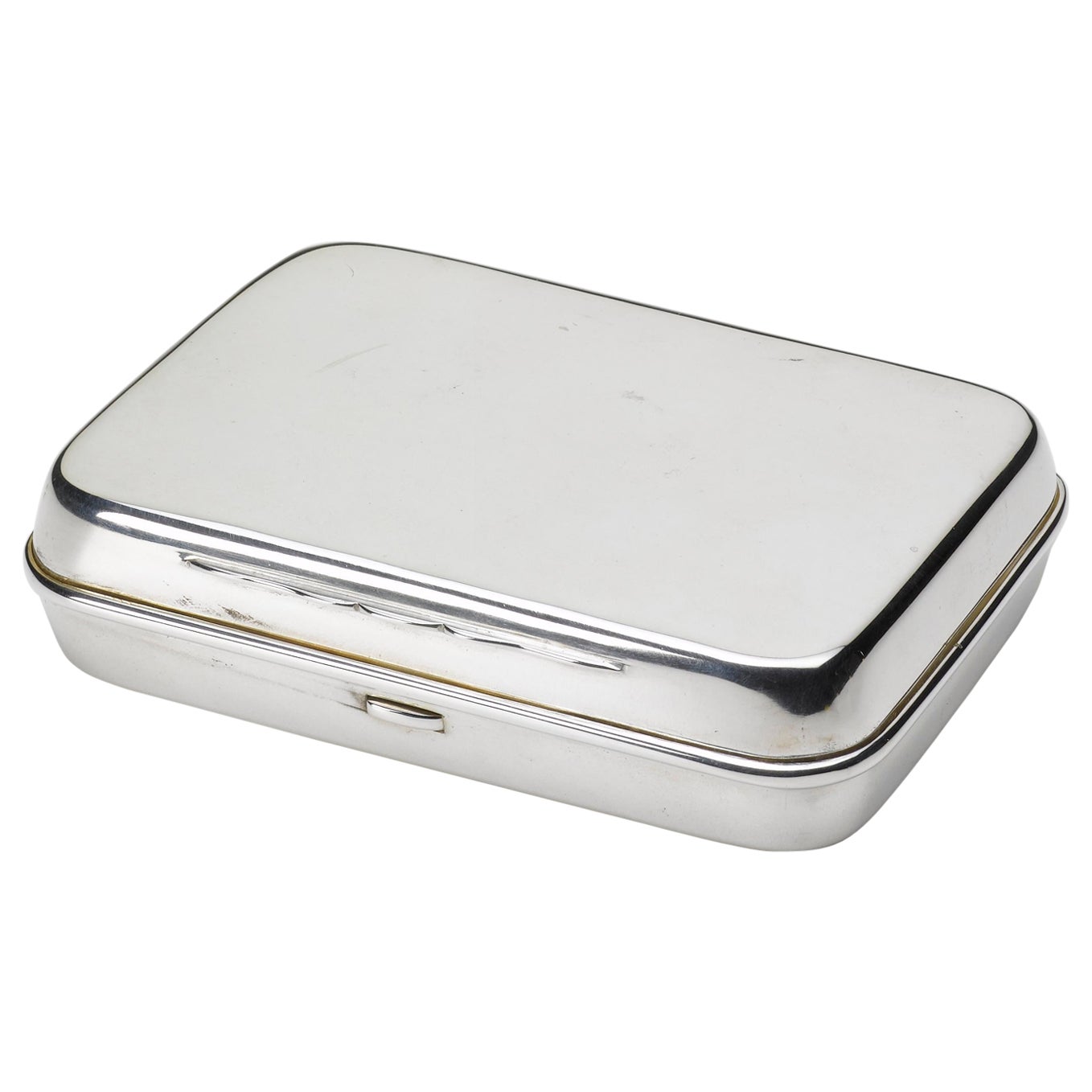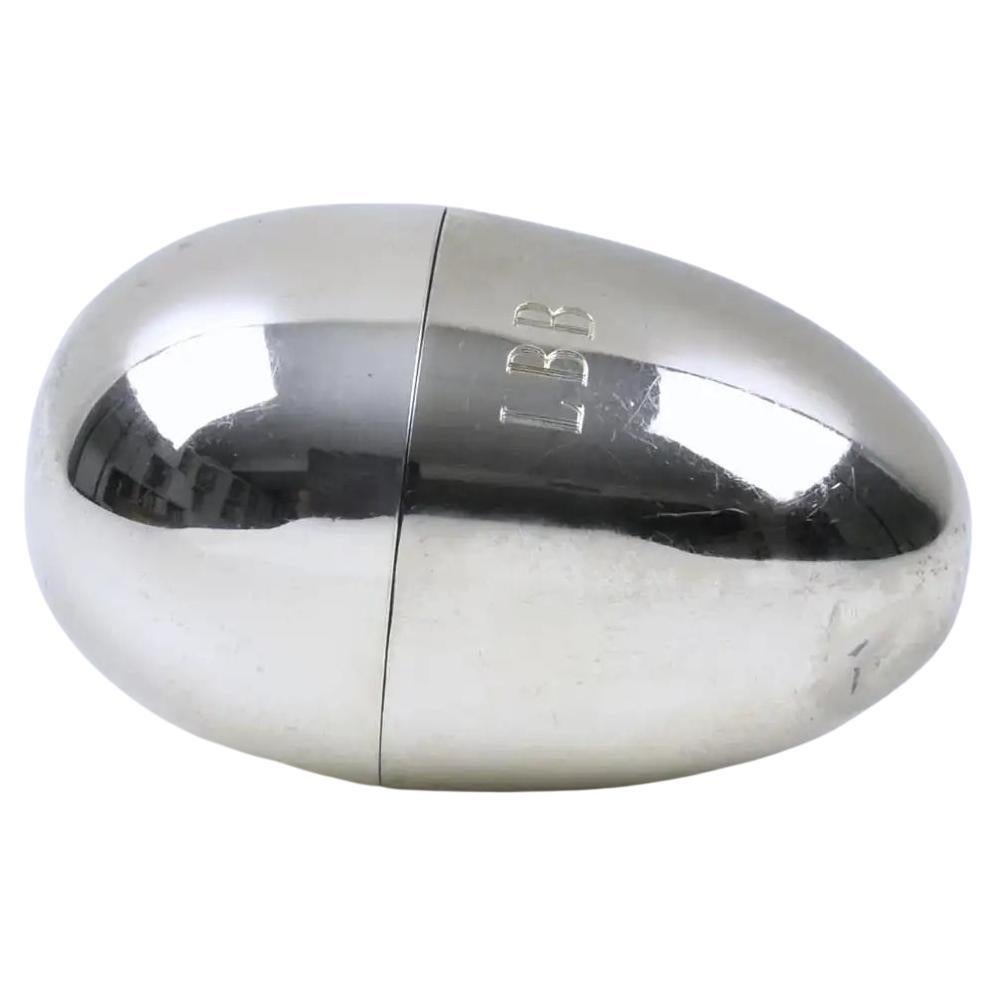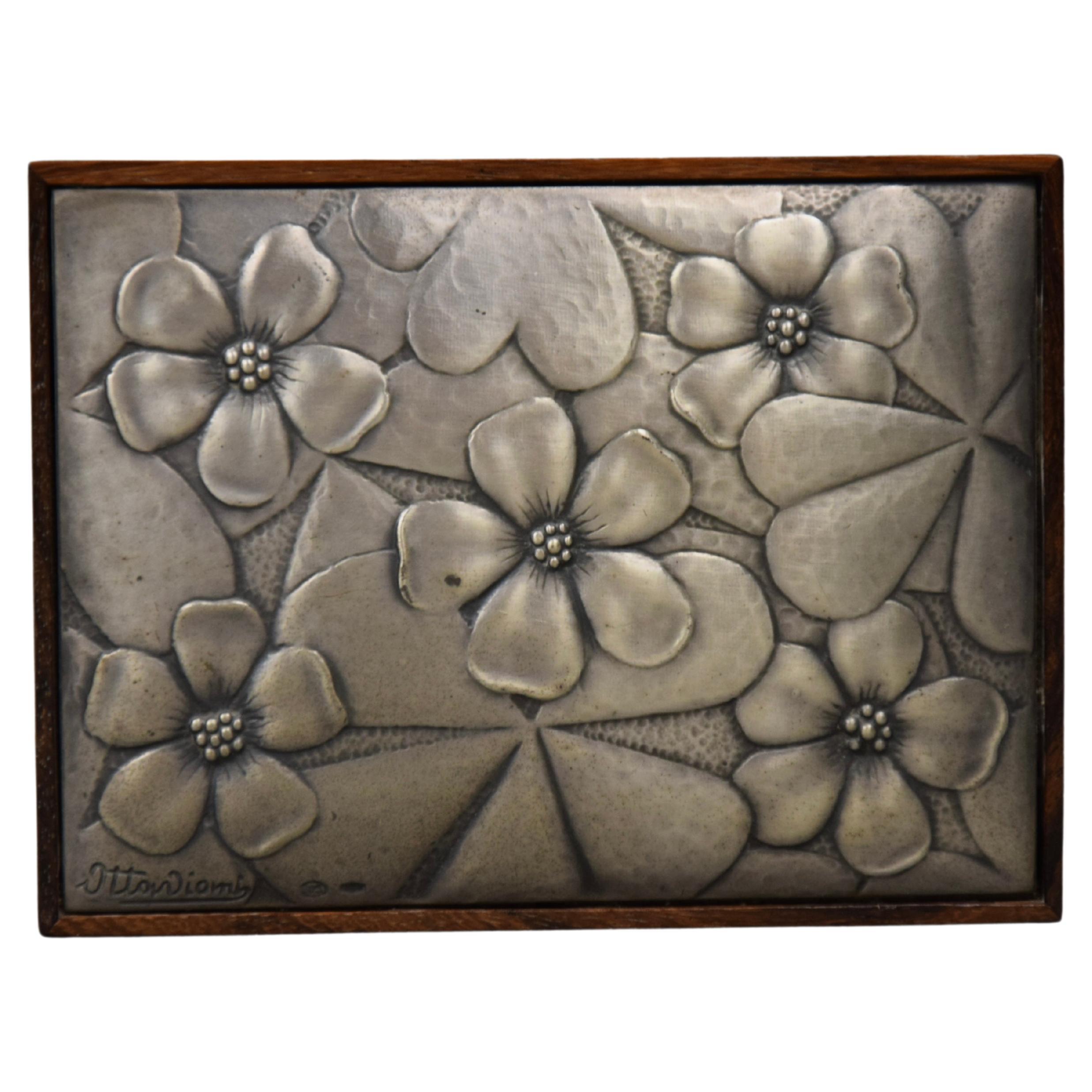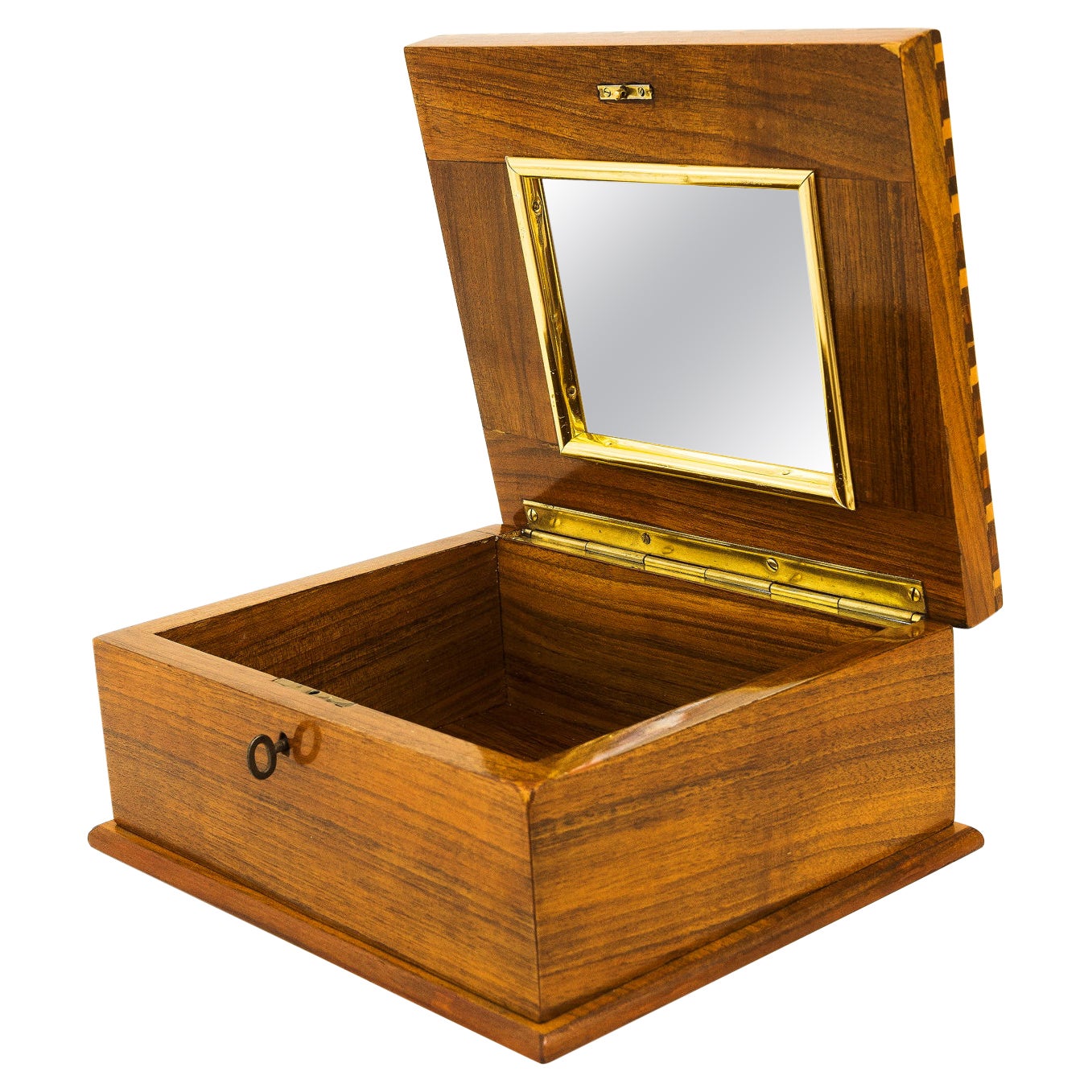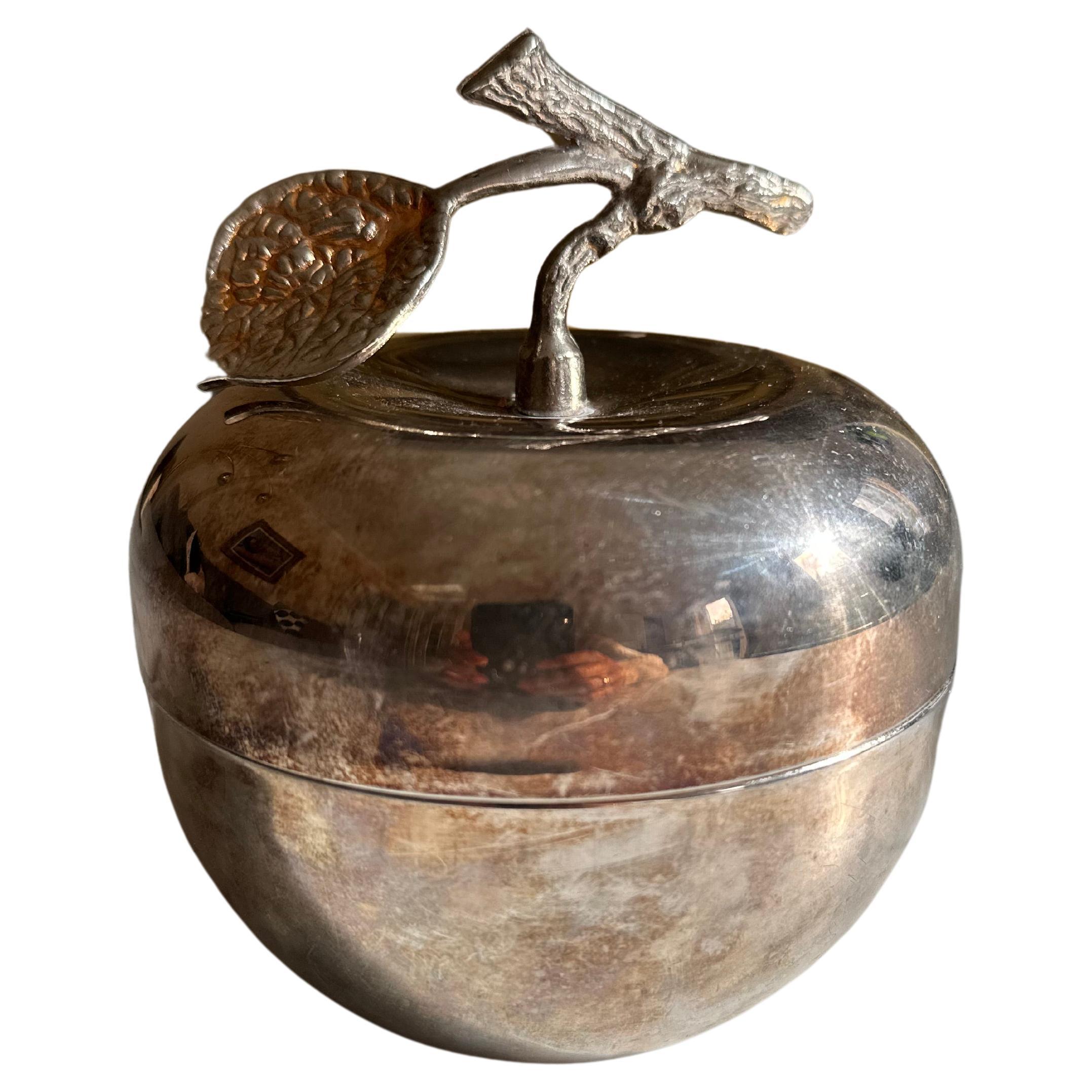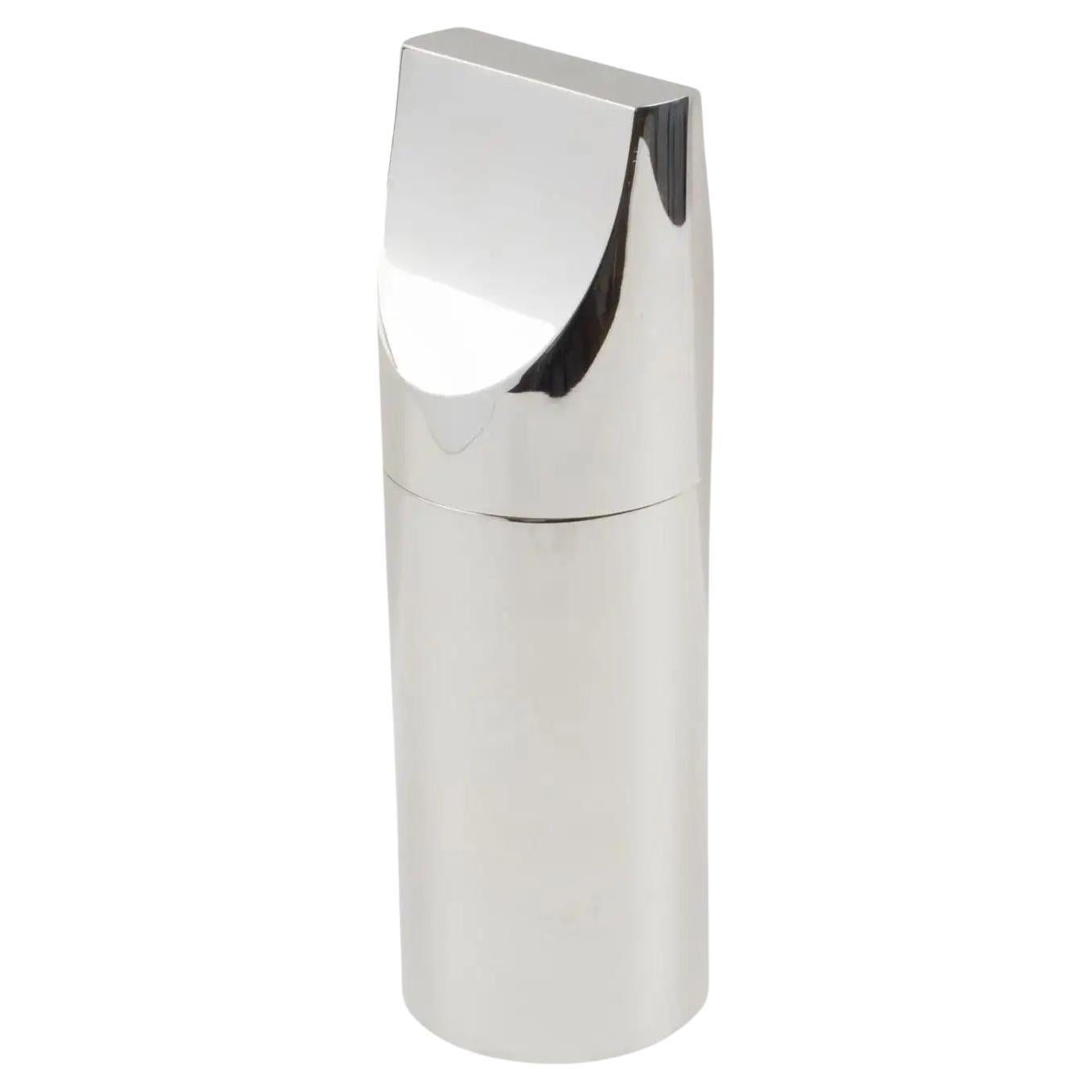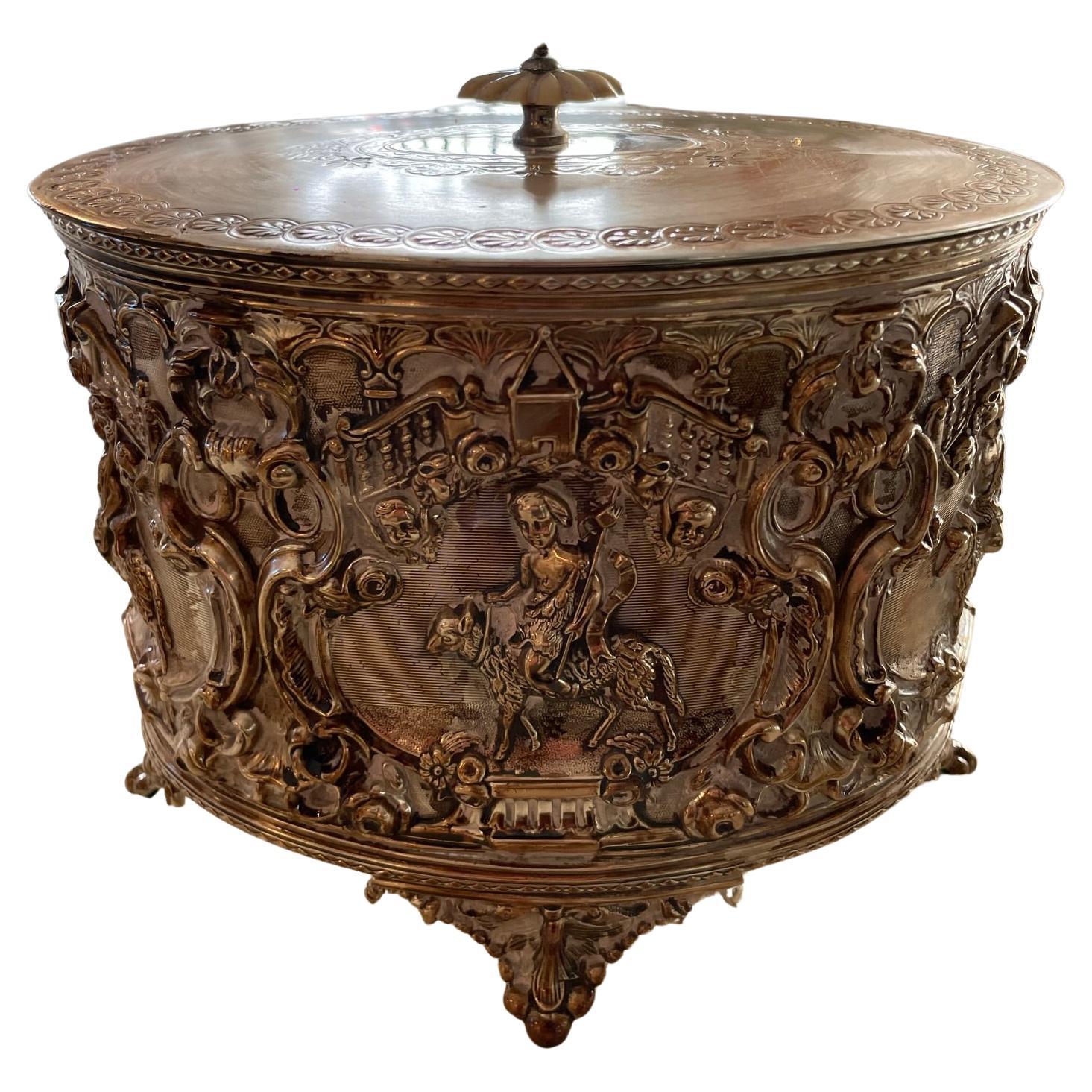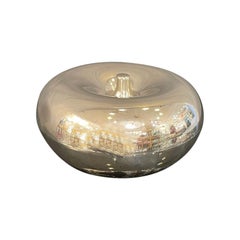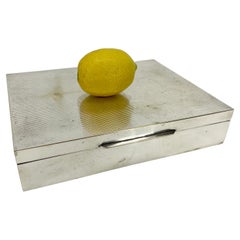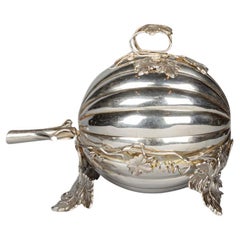
Italian Silver Plated Box, circa 1950
View Similar Items
Want more images or videos?
Request additional images or videos from the seller
1 of 8
Italian Silver Plated Box, circa 1950
About the Item
- Dimensions:Height: 1.58 in (4 cm)Width: 8.35 in (21.2 cm)Depth: 3.94 in (10 cm)
- Style:Mid-Century Modern (Of the Period)
- Materials and Techniques:
- Place of Origin:
- Period:
- Date of Manufacture:1950
- Condition:Wear consistent with age and use.
- Seller Location:London, GB
- Reference Number:Seller: Stock number 1341 1stDibs: LU195437642173
About the Seller
5.0
Gold Seller
These expertly vetted sellers are highly rated and consistently exceed customer expectations.
Established in 2015
1stDibs seller since 2016
128 sales on 1stDibs
Typical response time: 1 hour
More From This SellerView All
- Apple Shaped Italian Box, 1970sLocated in London, GBApple shaped Italian silver-plate containers or box, sweet holder candy box etc, 1970s.Category
Vintage 1970s Decorative Boxes
MaterialsSilver Plate
- Italian Box in the Style of Willy Rizzo, 1970By Willy RizzoLocated in London, GBAn Italian designed box in polished stainless steel with brass detailing wood interior in the style of Willy Rizzo, circa 1970.Category
Vintage 1970s Italian Mid-Century Modern Decorative Boxes
MaterialsBrass, Stainless Steel
- Grey Murano Glass BoxLocated in London, GBMonumental grey Murano glass box with polished brass inner core.Category
2010s Italian Modern Decorative Boxes
MaterialsBrass
$4,404 - Monumental Murano Glass BoxLocated in London, GBMonumental blue Murano glass box with polished brass inner core.Category
2010s Italian Modern Jewelry Boxes
MaterialsBrass
$4,404 / item - Monumental Amber Murano Glass BoxLocated in London, GBA Monumental amber Murano glass box with polished brass inner core.Category
Early 2000s Italian Modern Decorative Boxes
MaterialsBrass
- Silver Plated Picture Frame, Italy 1970Located in London, GBAn elegant picture frame in wood adorned with two silver plate stripes on sides. Italy 1970s.Category
Vintage 1970s Italian Mid-Century Modern Picture Frames
MaterialsSilver Plate
You May Also Like
- Large Italian Rectangular Silver Plate Cigar Box, circa 1960sLocated in Haddonfield, NJLarge Classic Italian Cigar Box in Thick Silver Plate With Striking Stripped Decor on the Top and Fitted with the Original Cedar Wood Lining. Marked made ...Category
Mid-20th Century Italian Mid-Century Modern Cigar Boxes and Humidors
MaterialsSilver Plate
$427 Sale Price44% Off - Continental Silver Plated Etrog Box, circa 1840Located in New York, NYInscribed M. MarshallCategory
Antique 1840s Decorative Boxes
MaterialsSilver
- Lucite and Silver Plate Decorative Box, Italy 1970sLocated in Atlanta, GAThe massive geometric shape boasts a silver plate metal base and a thick crystal clear Lucite lid. There is no visible maker's mark. The box is in good condition, with minor wear on ...Category
Vintage 1970s Italian Mid-Century Modern Decorative Boxes
MaterialsMetal, Silver Plate
- 1980s Modernist Silver Plated Italian Round BoxLocated in Aci Castello, ITA silver plated and brass round box designed and manufactured in Italy in the Eighties. It's il very good condition overall, on the lid, inside a brass frame there is an abstract met...Category
Late 20th Century Italian Modern Decorative Boxes
MaterialsSilver Plate
- Hallmarked Silver Plated Keepsake Box, Sheffield, UK, circa 1900Located in Colorado Springs, COOffered is a stunning silver plated keepsake box dating to 1900, with associated hallmark. This small box includes a wooden interior with two slots and a blank square on top where initials could have been engraved. A well maintained, elegant piece, this antique silver box is an excellent addition to any silver or home decor collection. Trinket or keepsake boxes have taken on many forms since their first conception in ancient times. However their purpose remains the same; to store jewelry and other items precious to the owner. Originally, these boxes were used specifically for jewelry. These were in common use as early as 5000 BC in Ancient Egypt, when the majority of Egyptians, both male and female, wore jewelry. Boxes were used to keep these gemstone encrusted items safe. In Ancient Rome, jewelry was a status symbol. Rings and brooches were utilized to represent ones status in society. Again, boxes were needed for security and storage purposes. Finding early examples of these are quite rare. Victorian and Edwardian examples of trinket boxes are far more common. This is because owning jewellery was a luxury until the Victorian era- let alone possessing so much a box was needed to store it all. Fine jewelry and other items became available to the masses after the industrial revolution due to the reduction in production costs. This led to a demand for trinket boxes, which were much smaller than jewelry boxes and therefore better suited to the needs of the middle class who did not yet possess an abundance of jewelry. In Victorian households, collectables and other items of interested were also stashed inside these boxes. This is why they are known as trinket or keepsake boxes, rather than just jewelry boxes, although of course jewelry was also stored in them. Trinket boxes were produced in large numbers around this time. Many were lined with colored plush or velvet or rich wood. More elaborate designs had interior divisions and trays for rings and other pieces of jewellery. It was also common to see trinket boxes so small that they could only contain one item, such as a single ring. Ornate exteriors were created to reflect the value of the trinket boxes contents. The Edwardian era saw the introduction of new styles of trinket box. These included small circular or oblong boxes...Category
Antique Early 1900s English Art Deco Decorative Boxes
MaterialsSilver
$600 Sale Price20% Off - Hallmarked Silver Plated Keepsake Box, Sheffield, Uk, Circa 1900Located in Colorado Springs, COOffered is a stunning Sheffield silver keepsake box dating to 1900, with associated hallmark. This small box includes a clean interior and rounded corners. The box is free of names or initials, but would have been used to house keepsakes such as jewelry or cufflinks. A well maintained, elegant piece, this antique silver box is an excellent addition to any silver collection. Trinket or keepsake boxes have taken on many forms since their first conception in ancient times. However their purpose remains the same; to store jewelry and other items precious to the owner. Originally, these boxes were used specifically for jewelry. These were in common use as early as 5000 BC in Ancient Egypt, when the majority of Egyptians, both male and female, wore jewelry. Boxes were used to keep these gemstone encrusted items safe. In Ancient Rome, jewelry was a status symbol. Rings and brooches were utilized to represent ones status in society. Again, boxes were needed for security and storage purposes. Finding early examples of these are quite rare. Victorian and Edwardian examples of trinket boxes are far more common. This is because owning jewellery was a luxury until the Victorian era- let alone possessing so much a box was needed to store it all. Fine jewelry and other items became available to the masses after the industrial revolution due to the reduction in production costs. This led to a demand for trinket boxes, which were much smaller than jewelry boxes and therefore better suited to the needs of the middle class who did not yet possess an abundance of jewelry. In Victorian households, collectables and other items of interested were also stashed inside these boxes. This is why they are known as trinket or keepsake boxes, rather than just jewelry boxes, although of course jewelry was also stored in them. Trinket boxes were produced in large numbers around this time. Many were lined with colored plush or velvet or rich wood. More elaborate designs had interior divisions and trays for rings and other pieces of jewellery. It was also common to see trinket boxes so small that they could only contain one item, such as a single ring. Ornate exteriors were created to reflect the value of the trinket boxes contents. The Edwardian era saw the introduction of new styles of trinket box. These included small circular or oblong boxes...Category
Antique Early 1900s British Art Deco Decorative Boxes
MaterialsSilver
